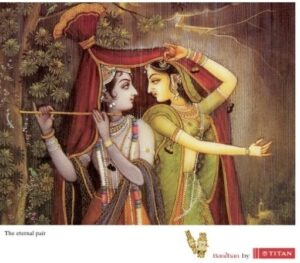The Psychology Behind Effective Print Ads
In an era dominated by digital media, print advertising continues to hold its ground, leveraging the power of psychology to influence consumer behavior. The tactile nature of print ads, combined with strategic use of colors, typography, and emotional storytelling, makes them a potent tool for marketers. This blog delves into the psychological principles behind effective print ads, with a focus on examples from Indian brands.
The Tangibility of Print Ads
One of the primary reasons print ads remain effective is their tangibility. Holding a physical piece of advertisement engages multiple senses, leading to better memory retention. The tactile experience of flipping through a magazine or newspaper creates a sense of authenticity and trust that digital ads often struggle to replicate. For instance, Fabindia’s print ads often use high-quality paper and vibrant colors to create a luxurious feel, enhancing the brand’s image of quality and tradition.
The Role of Colors
Colors play a crucial role in print advertising by evoking specific emotions and reactions. Different colors can trigger different psychological responses. For example, red can create a sense of urgency or excitement, while blue often conveys trust and calmness. Indian brands like Amul have mastered the use of colors in their iconic print ads. Amul’s use of bright, contrasting colors not only grabs attention but also reinforces the playful and approachable nature of the brand.

Typography and Its Influence
Typography is another critical element in print ads. The choice of font can significantly impact how a message is perceived. Serif fonts, for example, are often seen as traditional and reliable, while sans-serif fonts are viewed as modern and clean. The Hindu newspaper’s print ads frequently use serif fonts to convey a sense of authority and credibility, aligning with their brand identity as a trusted news source.
Emotional Storytelling
Emotional storytelling is a powerful tool in print advertising. By connecting with consumers on an emotional level, brands can create lasting impressions. McDonald’s India, for example, has effectively used emotional storytelling in their “EatQual” campaign. The print ads feature heartwarming stories of inclusivity and equality, resonating deeply with the audience and reinforcing the brand’s commitment to social responsibility.

The Power of Simplicity
Simplicity in design can make print ads more effective by ensuring the message is clear and easily understood. Overly complex ads can overwhelm the viewer and dilute the intended message. The “Incredible India” campaign by the Ministry of Tourism is a prime example of effective simplicity. The print ads often feature stunning visuals of Indian landscapes with minimal text, allowing the beauty of the images to speak for themselves and evoke a sense of wonder and curiosity.
Leveraging Social Proof
Social proof is a psychological phenomenon where people look to others to determine their own actions. Print ads that feature testimonials, endorsements, or user-generated content can leverage social proof to build trust and credibility. For instance, the print ads for Tanishq jewelry often feature real-life stories and testimonials from customers, enhancing the brand’s image as a trusted and beloved jeweler.
The Impact of Cultural Relevance
Cultural relevance is crucial for the success of print ads, especially in a diverse country like India. Ads that resonate with the cultural values and traditions of the target audience are more likely to be effective. The print ads for Surf Excel’s “Daag Achhe Hain” campaign are a great example. By showcasing everyday Indian scenarios and emphasizing the cultural value of learning through experience, the ads connect deeply with the audience.

